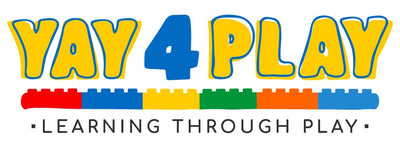Introduction to Six Bricks Activities
Six Bricks activities represent an innovative approach to early childhood education, designed to enhance cognitive, emotional skills and motor skills through simple exercises that are highly effective.
These activities utilize a set of six DUPLO size bricks in bright colours to create a multitude of learning opportunities that promote critical thinking, problem-solving, and collaboration among young learners.
It's a hands-on tool that is based on the principles of play-based learning to create amazing learning opportunities for children aged 3-6 or even 7 years old.

Benefits of Six Bricks in Learning Environments
Cognitive and Physical Development
Six Bricks activities are crafted to stimulate cognitive development across various domains. This is what makes over 300 Six Bricks activities the perfect resources for playful learning.
By engaging in these activities, children can improve their colour recognition, spatial awareness, and memory skills.
Moreover, the physical interaction with the bricks enhances fine motor skills as well as physical skills, which are crucial in the early stages of childhood development.
Social Skills and Collaboration
Group activities with Six Bricks foster social interactions and teamwork as part of the critical skills needed for children to succeed at school.
Children learn to communicate their ideas, listen to others, and work collaboratively to solve problems. This social aspect is vital for building confidence and developing interpersonal skills in young learners.
Children become so absorbed in this hands-on, experiential learning that they don't even realise how many skills they gain from each activity.

Creativity and Flexibility
The versatility of Six Bricks allows for endless possibilities in creative play - and in fact becomes part of daily activities at home and in learning centres to continuously develop essential skills.
Children can do patterning activities, solve puzzles, or invent their own games, which nurtures their creativity and flexibility in thinking.
This form of multi-sensory learning encourages children to think outside the box and develop innovative solutions to challenges.
Implementing Six Bricks Activities in Educational Settings
Centres who are seeking additional resources to promote the growth of children have a never-ending supply of activities as part of the basic education journey.

Step-by-Step Guide
- Introduction to Bricks: Introduce the children to the six bricks, explaining each color and its significance.
- Basic Building Tasks: Start with simple building tasks that involve stacking, aligning, and balancing the bricks.
- Pattern Recognition: Create sequences and patterns using different colors and ask the children to replicate or extend them.
- Memory Games: Use the bricks for memory tests, where children must recreate sequences from memory after a brief exposure.
- Team Challenges: Organize activities that require teamwork, such as building a specific structure together, to promote collaborative skills.
Classroom Integration of this powerful teaching tool
Integrating Six Bricks activities into the daily curriculum can be seamless and highly effective.
Teachers can use these activities as warm-up exercises to stimulate thinking, as breaks between lessons, or as part of structured learning activities.
They are also excellent for transition times or as a tool for classroom management. Once you see these activities in action, you begin to see their potential for students of all abilities, including autistic children.
Success Stories of Six Bricks in Action
Several educational institutions such as early learning centres, primary schools and family daycare centres have documented significant improvements in children’s cognitive and social skills after incorporating Six Bricks activities into their curriculum.
These case studies show enhanced problem-solving abilities, increased engagement in learning, and improved focus and attention among participants.
There is a global community of educators committed to using these hands-on resources and playful activities as part of their childhood education curriculum.

Final thoughts
Six Bricks quick activities offer a dynamic and flexible approach to early childhood education, providing significant benefits in cognitive development, social skills, maths exploration and creative thinking.
By integrating these playful activities into educational settings, educators can create a more engaging, inclusive, and stimulating learning environment that fosters early developmental skills in a fun and effective way.
Implementing these strategies and utilizing the resources available can significantly enhance the learning experience for children, preparing them for a successful educational journey.
To learn more about how you can gain the skills to use this method and these amazing resources as part of your own professional development, please contact us on ....
Here is more information on how you can be certified in Six Bricks - link
We don't know of any other educational resource that is so flexible and so extensive
